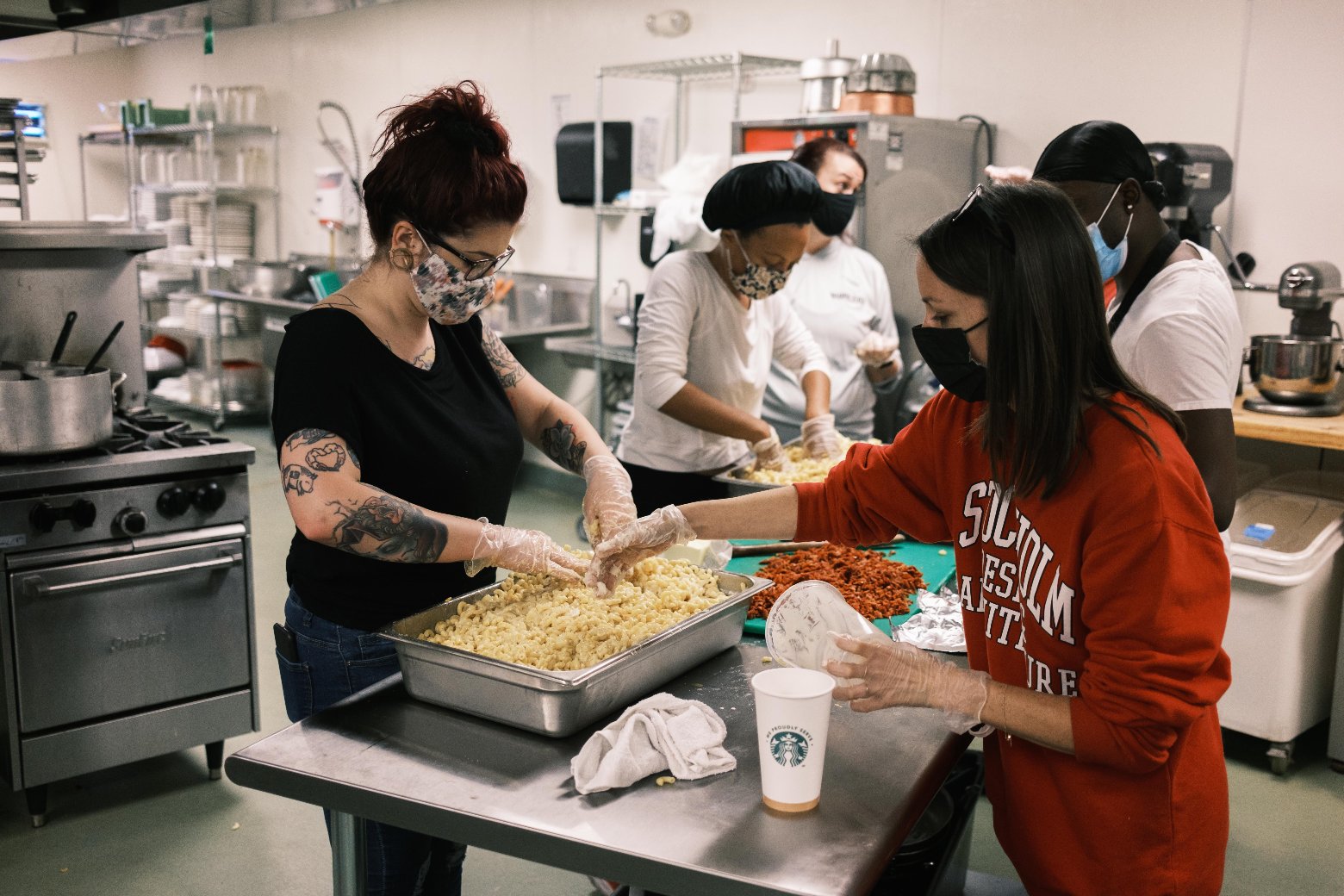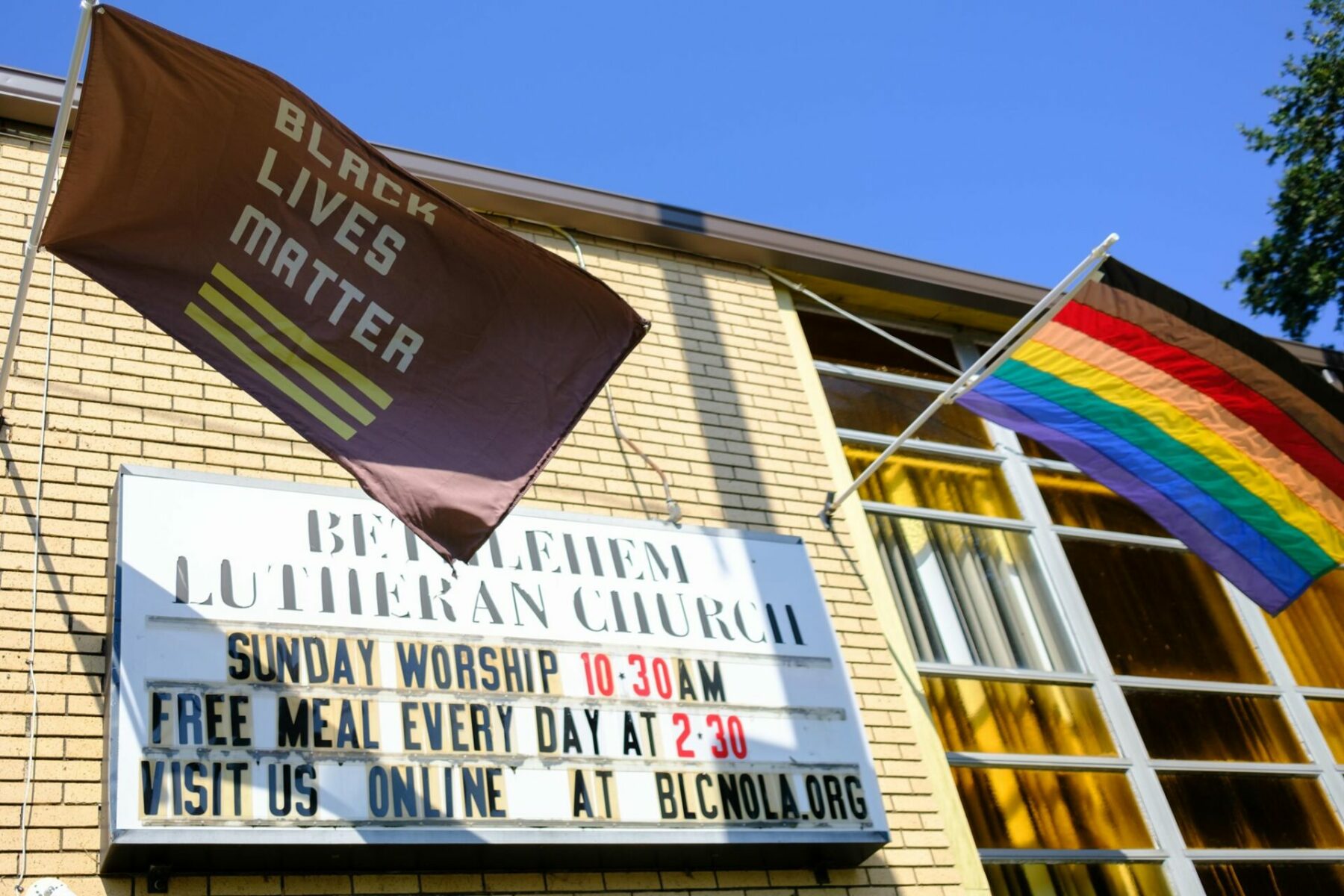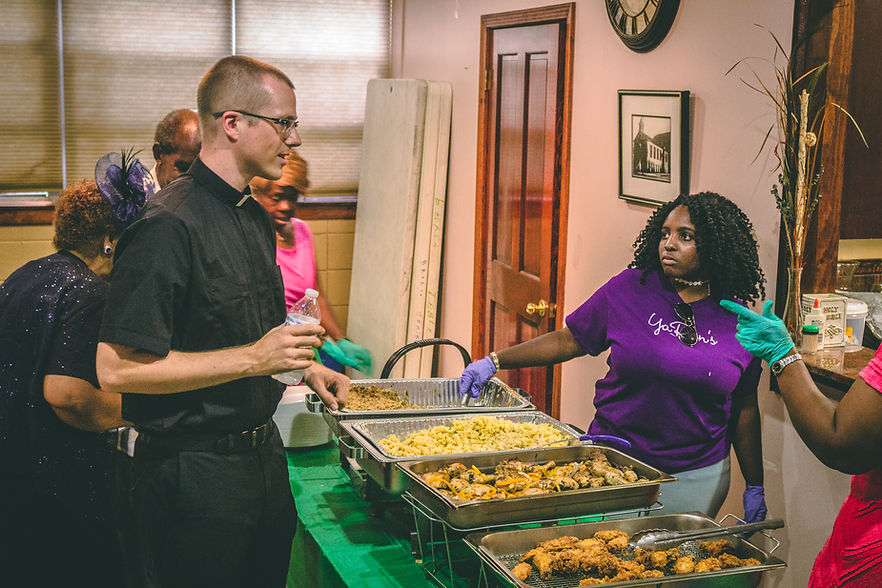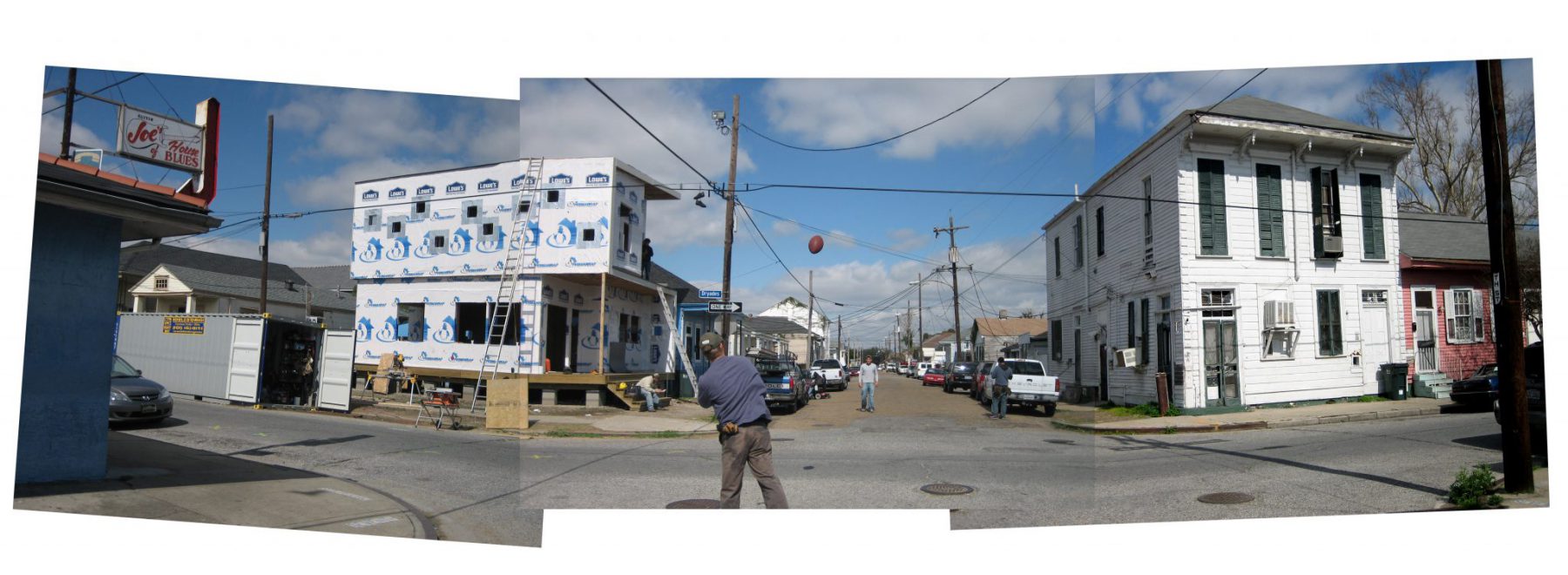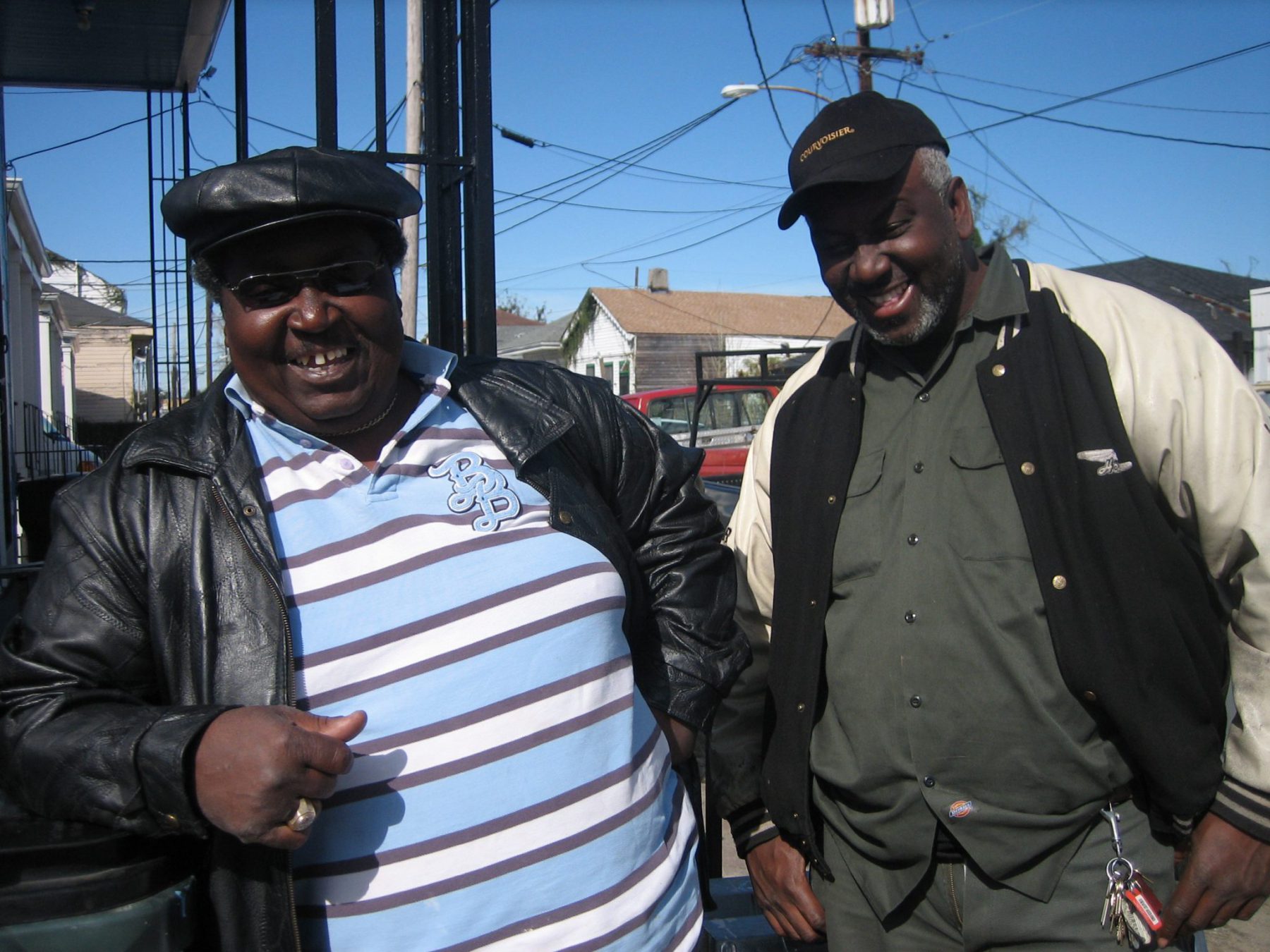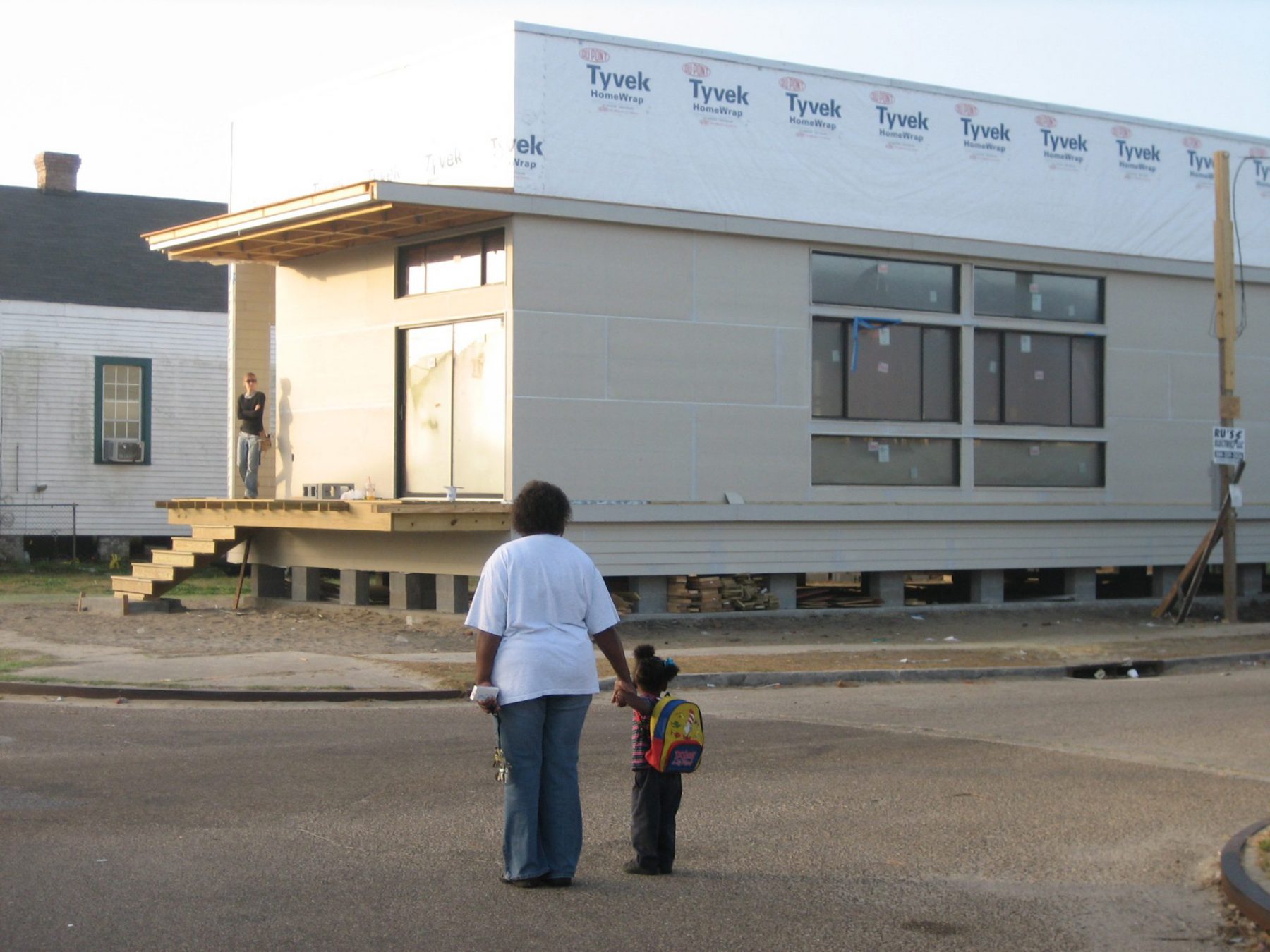During the spring semester, students often form meaningful bonds with community residents.
“In Central City, everyone is out on the street all the time, and you get to know them because you see them every day. We really started to create some bonds and relationships with people in the neighborhood. They come to see you every day and talk to you. Even when we were painting the house, people in the neighborhood would come and help select colors,” URBANbuild 4 aluma Karla Validivia remembers. “Getting to work with NHS, I got to know the family very well, and I’ve been able to visit them years after. It’s great to get to know the family because you are creating something that really affects them. It has a very personal feel.”
URBANbuild 9 alum Jake Gamberg recalls, “There were two neighbors across the street that we used to see every day. We would chat with them from time to time, and they watched us work every day. I know they enjoyed our presence. I remember Gene saying how much he was going to miss us when we showed up all cleaned up and dressed up for the final review.”
URBANbuild 10 students developed a special bond with young boys in the neighborhood who were fascinated by the construction. By the end of the semester, one of them decided he wanted to be an architect when he grew up. Neighbors often shout encouragement as they walk, bike, or drive by. In the ultimate endorsement, some indicate their interest in buying URBANbuild houses while they are still under construction.


